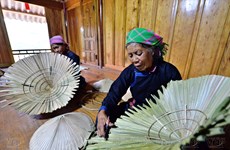Great actions to conserve Hanoi’s heritages amid urbanisation
In the face of strong urbanisation, the preservation of unique cultural and architectural heritages in Hanoi is more urgent than ever.
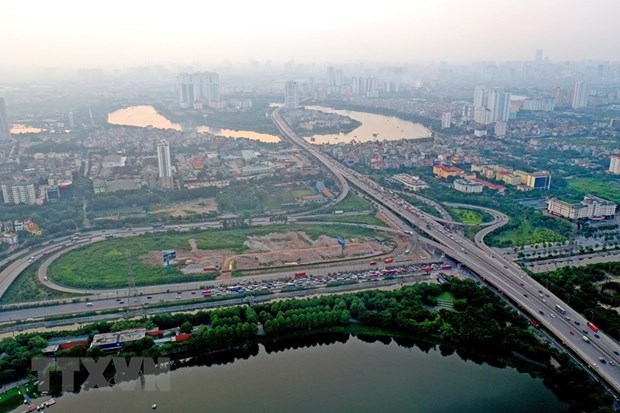 In the face of strong urbanisation, the preservation of unique cultural and architectural heritages in Hanoi is more urgent than ever (Source: VNA)
In the face of strong urbanisation, the preservation of unique cultural and architectural heritages in Hanoi is more urgent than ever (Source: VNA)Hanoi (VNA) - Hanoi is an attractive destination for domestic and foreign visitors thanks to its unique cultural and architectural heritages. In the face of strong urbanisation, the preservation of those distinctive heritages is more urgent than ever.
Hanoi boasts a huge variety of architectural heritages which reflect the unique cultural identities of the local community and serve certain functions in the city’s spatial organisation.
In the context of rapid socio-economic development, the municipal authorities have endeavoured to manage and preserve valuable tangible and intangible heritages which are in danger of being affected by the urbanisation and modernisation process.
Hanoi is home to about 6,000 historical, cultural-artistic, architectural and archaeological relic sites, some of which have been recognised by UNESCO.
According to the municipal Department of Culture and Sports, around 2,000 local relics have been damaged, with more than 200 in need of immediate conservation.
Preservation efforts for Hanoi’s eternal soul
Among the heritages in Hanoi, the Old Quarter is a prime example reflecting the authorities’ decades-long preservation efforts.
Known as an ancient urban heritage, the millennium-old area represents the eternal soul of Hanoi as it is associated with the formation and development of the capital city, as well as traditional handicraft and trade guilds.
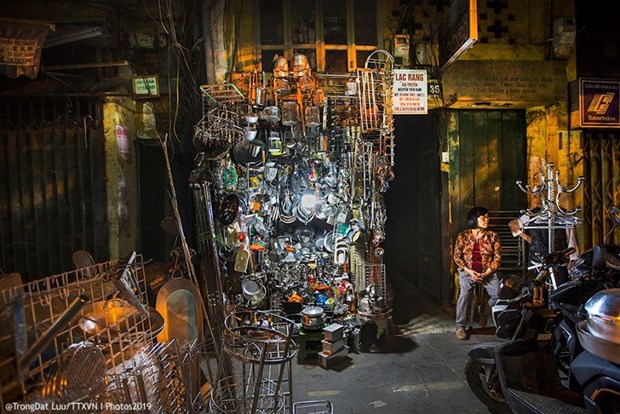 A store on Hang Thiec street (Source: VNA)
A store on Hang Thiec street (Source: VNA)The Old Quarter was designated as a national historical relic site in 2004. It also has the highest density of monuments in the country, with 79 streets and almost 4,300 houses on an area of 81ha.
Although the area has experienced socio-economic changes, it retains a unique atmosphere with vibrant commercial streets as well as some traditional handicrafts and socio-cultural activities.
The Old Quarter is characterised by rows of narrow shophouses, about 3m in width and 60-100m in depth. Due to their shape, these houses are called tubehouses.
Development pressure has prompted the destruction of traditional tubehouses, requiring urgent actions to preserve and restore the distinctive architectural and cultural value of the Old Quarter.
According to Vice Chairman of the Hoan Kiem district People's Committee Pham Tuan Long, the first preservation proposal was made by the Vietnam Institute for Urban and Rural Planning under the Ministry of Construction and the Australian Agency for International Development (AusAID) in 1990.
During the early 1990s, domestic and international experts, along with aid organisations, were engaged in surveys and studies, proposing suggestions to give a facelift to streets in this historical quarter.
In 1995, the Hanoi authorities established a project management board tasked with preserving and restoring valuable cultural heritages in the Old Quarter.
Long said conservation work has been divided into different
periods with specific programmes and projects involving relevant sectors and
agencies of the city and funded by foreign countries and organisations,
including the Swedish International
Development Cooperation Agency (SIDA),
Toulouse of France, Brussels of Belgium, the European Union, and the Japan International Cooperation Agency (JICA), among others.
Preservation initiatives have focused on improving housing conditions, upgrading tubehouses, restoring street architecture, and proposing architectural solutions, Long noted, adding that the municipal authorities have also carried out studies and looked for innovative and feasible ideas to apply in practice.
A pilot programme to renovate part of Ta Hien street was carried out in 2010 with a view to restoring the street in the historic centre. The street, often referred to as pho Tay (Westerners' street), is a mix of French-style terraced architecture and century-old traditional Vietnamese architecture.
The original facades of the houses were restored while balconies and windows were redecorated with a uniform design for front doors, plus air conditioning units and advertising boards.
The 15-billion-VND (648,540 USD) project was a cooperation programme between Hanoi, the French city of Toulouse, and the Vietnam Institute for Urban and Rural Architecture and Planning.
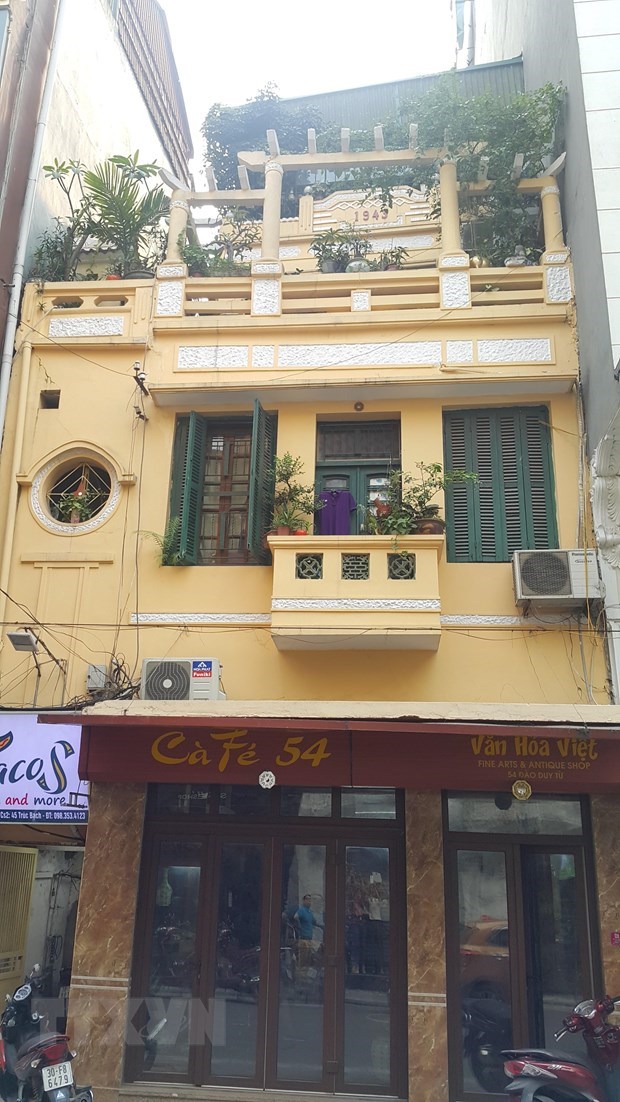 A house on Dao Duy Tu street after renovation (Photo: VNA)
A house on Dao Duy Tu street after renovation (Photo: VNA)
In 2015, a project to construct a resettlement area kicked off to move some 26,000 residents from the overcrowded Old Quarter, thus helping reduce the population density from 823 people per ha in 2010 to 500 in 2020. The idea is to improve people’s living conditions and promote heritage preservation.
Dao Ngoc Nghiem, former Director of the Hanoi Department of Planning and Architecture, said the relocation of local residents is necessary to ease pressure on the Old Quarter.
According to the Hoan Kiem district People’s Committee, the project will resettle 6,500 households by the end of 2020.
Following the successes of Ta Hien and Lan Ong streets to create destinations for food and shopping lovers, Hoan Kiem district’s administration has mobilised resources to refurbish the remaining 77 streets in the Old Quarter, hoping to make the area more attractive to tourists.
Starting in 2016, the work has been completed on 30 streets, and the rest are scheduled for completion in 2020.
Along with efforts to restore old architectural works in the Old Quarter, attention has also been paid to managing architectural planning, as well as surveying, evaluating and classifying tangible heritages and relic sites.
Communication campaigns have been held to spread awareness of the local culture, history and architecture in the community to help with preservation efforts.
Community joins hands in preservation
People in Hanoi have always played their part in heritage preservation, especially regarding valuable architectural works that are part of their spiritual lives.
Nghiem stressed that residents living in the Old Quarter play a key role in preservation efforts because they know what they need to do and how to do it.
It is very important to engage the local community in these efforts, as well as ensure their interests in this work, he added.
The Urban Sketchers Hanoi (USK Hanoi), a group of all ages who undertake different roles to maintain the beauty of the city and spread the love for it through their sketches, is making great contributions to raising public awareness of local heritage, historical and cultural values, as well as the space they are living in.
Architect Tran Thi Thanh Thuy, head of USK Hanoi, which was established in 2016, said the group gathers architects, painters, office workers, retirees and even small children, from professional painters to those who have never used a paint brush before.
After nearly three years, the group has had more than 4,000 members, she said, adding that also thanks to regular exhibitions of their sketches, more and more people have joined USK Hanoi.
Talking about “Tap the cu Ha Noi – Ky hoa va hoi uc” (Hanoi’s Old Living Quarters – Sketches and Memories) – the first book released by USK Hanoi that made its debut in late 2018, Thuy said Hanoi is changing very fast amidst rapid urbanisation, but there remain “hidden precious gems” that have given the city unique features that cannot be found anywhere else.
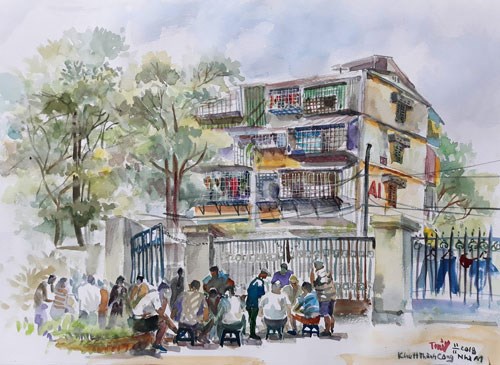 A sketch of a building in the Thanh Cong old living quarter area by Tran Thi Thanh Thuy in the book.
A sketch of a building in the Thanh Cong old living quarter area by Tran Thi Thanh Thuy in the book.
Old living quarters are an example. They reflect Hanoi of the past full of hardships as well as sentiments, and they are also where generations of Hanoians have been born and grown up. However, they are gradually being demolished and replaced by other structures.
Following the success of their first book, USK Hanoi released “Pho co Ha Noi – Ky hoa va hoi uc” (Hanoi’s Old Quarter – Sketches and Memories) in October 2019. The Vietnamese-English book features more than 200 sketches of streets in the city’s famous Old Quarter, along with emotional essays.
Thuy noted that the group is planning to publish a sketch book about old French-style houses in Hanoi next year, and maybe another on the capital city’s delicacies the following year.
In August, the group was recognised for their activities in the category of Actions for Hanoi at the Bui Xuan Phai – For the Love of Hanoi Awards hosted by The thao & Van hoa (Sports & Culture) newspaper of the Vietnam News Agency.
Thuy said she believes that with the global popularity of social networks today, feelings and love for Hanoi expressed through sketches of the city, its people and culture will be shared not only in Asia but also throughout the world.
Foreigners who see the sketches will be captivated by the ancient and modern beauty of Hanoi, thus inspiring them to pick up their backpacks for a trip to the city, she said./.
Preservation initiatives have focused on improving housing conditions, upgrading tubehouses, restoring street architecture, and proposing architectural solutions, Long noted, adding that the municipal authorities have also carried out studies and looked for innovative and feasible ideas to apply in practice.
A pilot programme to renovate part of Ta Hien street was carried out in 2010 with a view to restoring the street in the historic centre. The street, often referred to as pho Tay (Westerners' street), is a mix of French-style terraced architecture and century-old traditional Vietnamese architecture.
The original facades of the houses were restored while balconies and windows were redecorated with a uniform design for front doors, plus air conditioning units and advertising boards.
The 15-billion-VND (648,540 USD) project was a cooperation programme between Hanoi, the French city of Toulouse, and the Vietnam Institute for Urban and Rural Architecture and Planning.
 A house on Dao Duy Tu street after renovation (Photo: VNA)
A house on Dao Duy Tu street after renovation (Photo: VNA)In 2015, a project to construct a resettlement area kicked off to move some 26,000 residents from the overcrowded Old Quarter, thus helping reduce the population density from 823 people per ha in 2010 to 500 in 2020. The idea is to improve people’s living conditions and promote heritage preservation.
Dao Ngoc Nghiem, former Director of the Hanoi Department of Planning and Architecture, said the relocation of local residents is necessary to ease pressure on the Old Quarter.
According to the Hoan Kiem district People’s Committee, the project will resettle 6,500 households by the end of 2020.
Following the successes of Ta Hien and Lan Ong streets to create destinations for food and shopping lovers, Hoan Kiem district’s administration has mobilised resources to refurbish the remaining 77 streets in the Old Quarter, hoping to make the area more attractive to tourists.
Starting in 2016, the work has been completed on 30 streets, and the rest are scheduled for completion in 2020.
Along with efforts to restore old architectural works in the Old Quarter, attention has also been paid to managing architectural planning, as well as surveying, evaluating and classifying tangible heritages and relic sites.
Communication campaigns have been held to spread awareness of the local culture, history and architecture in the community to help with preservation efforts.
Community joins hands in preservation
People in Hanoi have always played their part in heritage preservation, especially regarding valuable architectural works that are part of their spiritual lives.
Nghiem stressed that residents living in the Old Quarter play a key role in preservation efforts because they know what they need to do and how to do it.
It is very important to engage the local community in these efforts, as well as ensure their interests in this work, he added.
The Urban Sketchers Hanoi (USK Hanoi), a group of all ages who undertake different roles to maintain the beauty of the city and spread the love for it through their sketches, is making great contributions to raising public awareness of local heritage, historical and cultural values, as well as the space they are living in.
Architect Tran Thi Thanh Thuy, head of USK Hanoi, which was established in 2016, said the group gathers architects, painters, office workers, retirees and even small children, from professional painters to those who have never used a paint brush before.
After nearly three years, the group has had more than 4,000 members, she said, adding that also thanks to regular exhibitions of their sketches, more and more people have joined USK Hanoi.
Talking about “Tap the cu Ha Noi – Ky hoa va hoi uc” (Hanoi’s Old Living Quarters – Sketches and Memories) – the first book released by USK Hanoi that made its debut in late 2018, Thuy said Hanoi is changing very fast amidst rapid urbanisation, but there remain “hidden precious gems” that have given the city unique features that cannot be found anywhere else.
 A sketch of a building in the Thanh Cong old living quarter area by Tran Thi Thanh Thuy in the book.
A sketch of a building in the Thanh Cong old living quarter area by Tran Thi Thanh Thuy in the book.Old living quarters are an example. They reflect Hanoi of the past full of hardships as well as sentiments, and they are also where generations of Hanoians have been born and grown up. However, they are gradually being demolished and replaced by other structures.
Following the success of their first book, USK Hanoi released “Pho co Ha Noi – Ky hoa va hoi uc” (Hanoi’s Old Quarter – Sketches and Memories) in October 2019. The Vietnamese-English book features more than 200 sketches of streets in the city’s famous Old Quarter, along with emotional essays.
Thuy noted that the group is planning to publish a sketch book about old French-style houses in Hanoi next year, and maybe another on the capital city’s delicacies the following year.
In August, the group was recognised for their activities in the category of Actions for Hanoi at the Bui Xuan Phai – For the Love of Hanoi Awards hosted by The thao & Van hoa (Sports & Culture) newspaper of the Vietnam News Agency.
Thuy said she believes that with the global popularity of social networks today, feelings and love for Hanoi expressed through sketches of the city, its people and culture will be shared not only in Asia but also throughout the world.
Foreigners who see the sketches will be captivated by the ancient and modern beauty of Hanoi, thus inspiring them to pick up their backpacks for a trip to the city, she said./.










